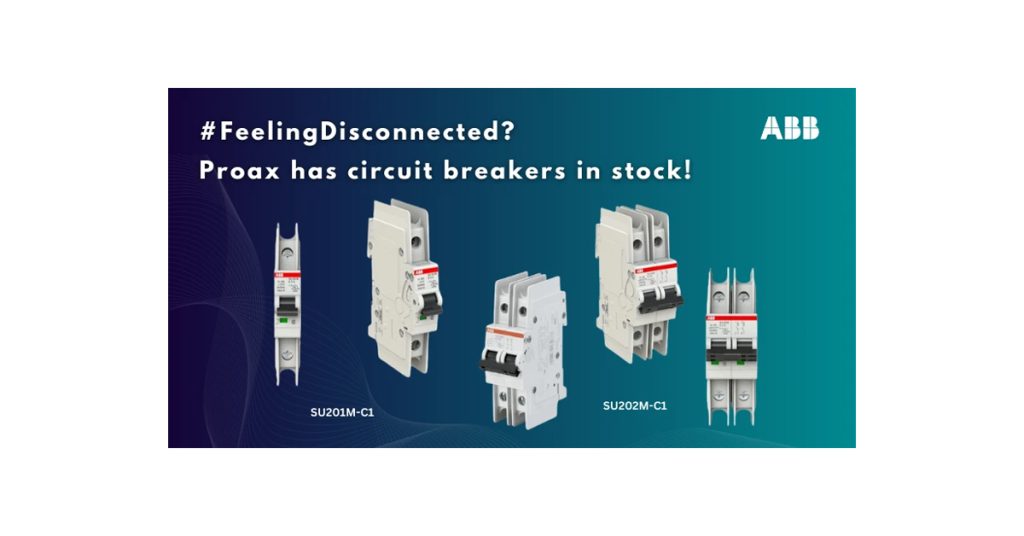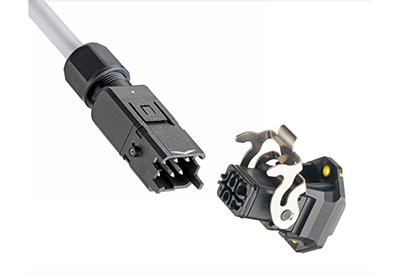Comprehensive Guide to ABB Circuit Breakers

July 17, 2024
A circuit breaker is an electrical safety device designed to protect an electrical circuit from damage caused by excess current. It functions as a switch that automatically interrupts the flow of electricity when it detects a fault, such as an overload or a short circuit, thereby preventing damage to the circuit, appliances, or electrical system.
Circuit breakers are typically found in electrical distribution panels or breaker boxes, where they monitor the flow of electricity to various circuits in a building or structure. When the current exceeds a certain threshold for a specified period, the circuit breaker trips, cutting off the flow of electricity to that circuit.
Single Pole Circuit Breakers: 277V up to 40AMP
A single pole circuit breaker rated for 277 volts and up to 40 amps is a specific type of circuit protection device designed for use in electrical systems where the voltage is 277 volts and the maximum current load is 40 amps. Here’s what each of these specifications means:
Single Pole – The number of conductors the circuit breaker can interrupt when it trips.
277 Volts – This is the voltage rating of the circuit breaker.
Up to 40 Amps – This is the maximum current rating of the circuit breaker.
Applications for single pole circuit breakers rated for 277 volts and up to 40 amps can vary, but they are commonly found in commercial and industrial settings where higher voltage and current levels are required, such as lighting circuits, HVAC systems, and certain types of machinery.
2 Pole Circuit Breakers: 480V up to 40AMP
A 2-pole circuit breaker rated for 480 volts and up to 40 amps is another specific type of circuit protection device, designed for use in electrical systems where the voltage is 480 volts and the maximum current load is 40 amps. Let’s break down each of these specifications:
2-Pole – Interrupts two conductors simultaneously.
480 Volts – This is the voltage rating of the circuit breaker. This voltage level is typical in industrial settings and certain commercial applications.
Up to 40 Amps – Similar to the previous example, this indicates the maximum current rating of the circuit breaker.
Applications for 2-pole circuit breakers rated for 480 volts and up to 40 amps can include various industrial machinery, large motors, HVAC systems, and other heavy-duty electrical equipment commonly found in industrial and commercial settings.
As always, it’s crucial to select the appropriate circuit breaker based on the specific requirements of the electrical system and to ensure compliance with local electrical codes and regulations for proper installation and usage. Additionally, these circuit breakers should be installed by qualified electricians to ensure safety and proper operation.
3 Pole Circuit Breakers: 480V up to 40AMP
A 3-pole circuit breaker rated for 480 volts and up to 40 amps is a specific type of circuit protection device designed for use in electrical systems where the voltage is 480 volts and the maximum current load is 40 amps. See the specifications below:
3-Pole – Unlike single-pole or 2-pole breakers, which interrupt one or two conductors respectively, a 3-pole breaker interrupts three conductors simultaneously.
480 Volts – This is the voltage rating of the circuit breaker. This voltage level is typical in industrial settings and certain commercial applications.
Up to 40 Amps – Similar to the previous examples, this indicates the maximum current rating of the circuit breaker.
Applications for 3-pole circuit breakers rated for 480 volts and up to 40 amps are prevalent in industrial and commercial environments where three-phase power distribution is utilized. These may include large machinery, motors, pumps, HVAC systems, and other heavy-duty electrical equipment.
As with any electrical installation, it’s essential to select the appropriate circuit breaker based on the specific requirements of the electrical system and to ensure compliance with local electrical codes and regulations for proper installation and usage. Qualified electricians should handle the installation to guarantee safety and adherence to standards.
















